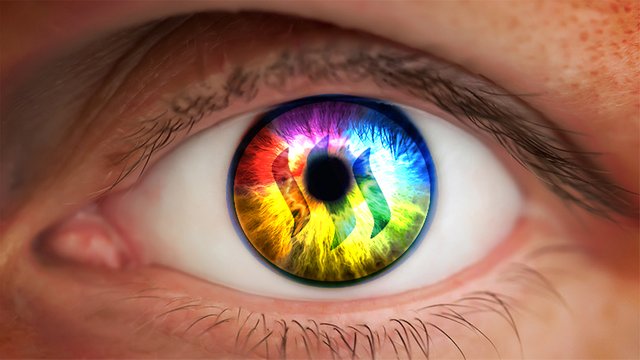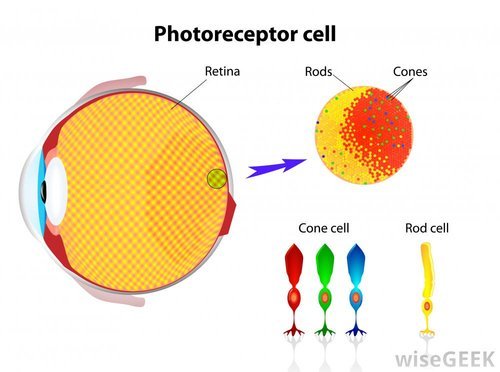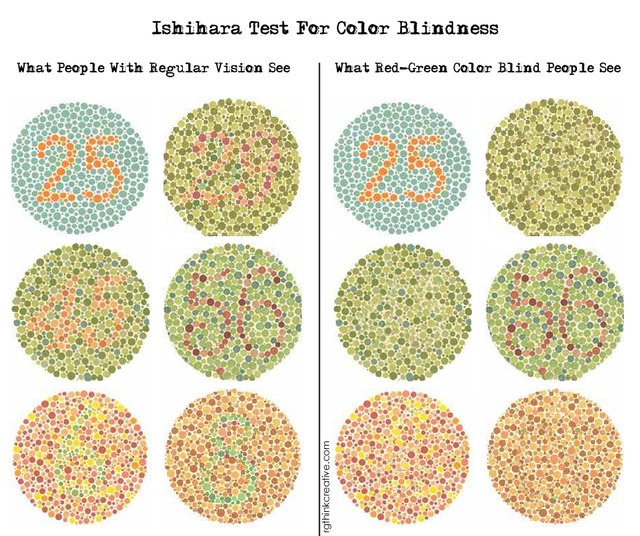Colorblindness: How Does It Work And What Is It Like?

Colors are such an important part of our vision.
Most of us probably couldn't imagine a life without the ability to see color - yet, some of us experience it daily.
So what exactly is colorblindness, how does it work, what causes it, who does it affect and what is it like ?!
How do we see color?
The retina of our eyes is equipped with thousands of light-detecting photoreceptor cells - they are called cones and rods.
Rods are the receptors for our vision in low light / at night time, and enable us to distinguish between grey and black shades.
And Cones are the color receptors of our eyes, which allow us to see different colors and details of colors shades in bright light.
And there are 3 different kinds of cones - red, blue and green.
Each of them is sensitive to different wavelengths of light.
So for most people, all of these 3 kinds of cones are working normally, and then we can see about 1 Million different colors!
The brain then receives a combine signal from these three kinds of cones and enables us to see color.

What is colorblindness?
But some people are colorblind which means their cones are not functioning correctly.
About 2% of the population (mostly men) are dichromats, which means that, only 2 kinds of their cones are working, and they don't see a visual difference between yellow, orange, red and green. They can still see about ten thousand colors.
Another kind of colorblindness which about 6% of males worldwide experience is anomalous trichromacy.
A different term for this is red-green colorblindness, which you might have heard of.
For these people, all 3 kinds of cones are working, but some of the wavelengths from the red and green cones are shifted, so it's hard for the person to distinguish between a red and a green tone.
Why are men more likely to experience color blindness?
Yes it's true, color blindness is much more common in men than in women.
That's because the genes of the green and red pigments are located on the X chromosome.
Since women have two X chromosomes,* both* of them would have to be damaged in order for the woman to experience colorblindness, which is just much less likely.

Seeing more colors - or none at all
"Normal" colorblindness doesn't actually mean seeing no color at all.
There is a rare condition called achromatopsia though, where the patients can really only see the whole world in shades of grey and black, about 100 different shades in total.
But on the other hand, some people can also see more colors than the rest of us.
This is called Tetrachromacy: in this case, the patient actually has a fourth type of cone, which is pretty rare.
And interestingly, this mostly affects women.
But scientists have quite a hard time finding people that actually experience this, as it seems like this is a skill that has to be trained, and most women don't discover it although they carry the genetic information.

Images: 1, 2, 3, 4, Sources: 1, 2, 3, 4, 5
- Instagram -

© Sirwinchester
I always heard that most people experiencing colorblindness were men but never knew why. thx for sharing! interesting!
Glad to hear that you learned something new!
Have you seen those enchroma sunglasses? Look at some compilations on youtube, of guys putting them on and seeing red/green distinctly for the first time.
Yes I saw a few of them, awesome to see how something that seems as simple as a pair of glasses can have such a huge effect!
I really can't imagine what this must be like.. okay you don't see everything black and white, but not being able to tell the difference between certain shades must already be pretty confusing, imagine going shopping or buying someone a gift and then later being told that it actually has a different color than you thought ..
Yes it must affect their lives in many different ways which we probably can't even think of!
If you do anything in colors (like statistics), avoid to use (several) red-green-yellow colors.
Blue shades always work, but dont mix with purple.
This post has been ranked within the top 10 most undervalued posts in the first half of Dec 18. We estimate that this post is undervalued by $13.01 as compared to a scenario in which every voter had an equal say.
See the full rankings and details in The Daily Tribune: Dec 18 - Part I. You can also read about some of our methodology, data analysis and technical details in our initial post.
If you are the author and would prefer not to receive these comments, simply reply "Stop" to this comment.